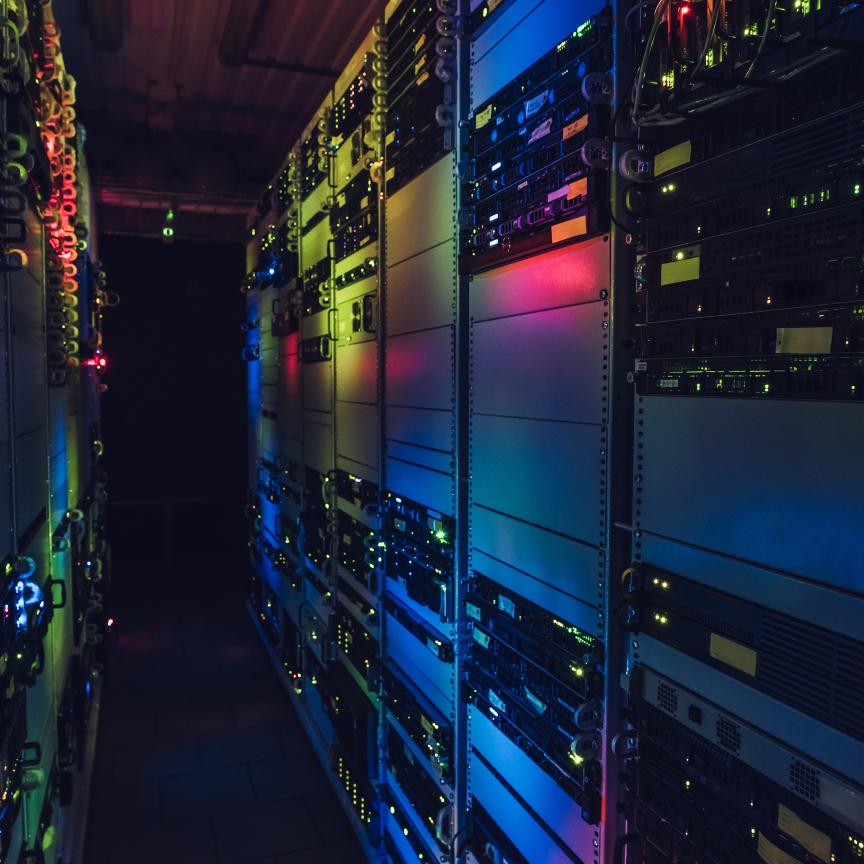In recent years, the movement of data – rather than the sheer speed of computation – has become a major bottleneck to large scale or particularly data-intensive HPC applications. This has driven bandwidth increases in interconnect technology, effectively widening the pipe that data uses to travel across the network.
With increasingly complex challenges in science and engineering, researchers are looking to larger computing systems that require fast networking to deliver the data they need for their experiments and research projects.
The choice to develop a bespoke system or use an end-to-end solution to support scientific research projects depends on workloads, scale and budget. There are many ways to solve these challenges, but the answer for each organisation will depend on the scale of the challenge and the demand for latency, which inevitably drives the cost of deployment.
As the demand for better performance leads to more highly parallel solutions and data-intensive computing systems, networking technology is becoming increasingly important in supporting sustained application performance.
Networking companies provide high-speed access to data, which can support high throughput workloads. While the main networking technologies used in HPC are based on either Ethernet or InfinBand, there are also other technologies that use PCI-Express to develop networking fabrics to support other ultra-low latency, high-bandwidth workloads. This is generally based on the use of high-speed, real-time systems, clustered databases, general networking, web services and industrial embedded applications.
Other products
Ayar Labs is disrupting the traditional performance, cost and efficiency curves of the semiconductor and computing industries by delivering up to a 1,000x improvement in interconnect bandwidth density at one-10th the power. They use standard CMOS processing to develop high-speed, high-density, low-power optical interconnect ‘chiplets’ and lasers to replace traditional electrical I/O.
Cisco UCS helps change the way IT organisations do business. It combines industry-standard, x86-architecture servers with networking and storage access into a single unified system. UCS brings increased productivity, reduced total cost of ownership and scalability into your data centre.
DustPhotonics helps hyperscale data players move to more optical lanes and complexity with a uniquely simple yet strategic, reliable and efficient Electro-Optic Coupling technology.
The DustPhotonics QSFP-DD-SR8 is a hot, pluggable transceiver designed for 400GB/s optical links of up to 100 meters over OM3/4/5 multi-mode fiber. The transceiver is IEEE 802.3bs 400GBASE-SR8 and QSFP-DD MSA compliant for use in data centres, high performance computing (HPC), and enterprise applications.
Eoptolink is dedicated to researching, developing and manufacturing, and markets a diverse portfolio of high-performance, optical transceiver modules and optical components for various ICT applications, such as data centre, telecom networks (FTTx, LTE and transmission), security monitoring and smart grid.
Extoll is a company that delivers products to the high-performance interconnect IP market. The company believes in digital-centric design for physical IP, for example, its high-speed, multi-rate, multi-protocol SerDes is based mainly on digital logic. Complemented by advanced verification and modelling methodology, Extoll can offer robust and flexible solutions to customer’s interconnect challenges.
GigaIO is a cloud-class, enterprise-class and open standards composable infrastructure solution. GigaIO is committed to open standards and a contributing member to Linux, to the PCIe standard, and to the CXL consortium.
You can pick and choose the orchestration software that best fits its customer needs, and build a solution using their preferred vendor and model for servers, GPUS, FPGAs, storage, and for any other PCIe resource in a rack designed specifically for your applications.
With the pervasive use of AI across industries, enterprise data centres carry a large number of vital services. Huawei CloudFabric 2.0 solution provides customers with a next-generation data centre network that delivers super capacity, intelligent experience and autonomous driving, helping enterprises mine intelligence from data, accelerate digital transformation and promote the development of the digital economy.
LDA Technologies is a provider of high-end FPGA-oriented solutions optimised for ultra-low latency operation, targeted for data processing acceleration, high-performance computing, low-latency networking, and high-frequency trading.
LDA products range from small add-on cards to 4U HPC devices. In addition, LDA offers a broad set of specialised industry-oriented solutions and standalone, ultra-low latency networking IP cores that can be used as part of users’ FPGA logic. LDA also offers consultancy services.
Mellanox InfiniBand solutions incorporate In-Network Computing technology that performs data algorithms within the network devices, delivering 10 times higher performance and enabling the era of ‘data-centric’ data centres. By delivering the fastest data speed, lowest latency, smart accelerations and highest efficiency and resiliency, InfiniBand is the best choice to connect the world’s top HPC and artificial intelligence supercomputers.
Dolphin Interconnect Solutions products are used to connect multiple computers and IO systems together to create high performance computing platforms for demanding applications. Application clusters created using Dolphin’s interconnect products provide significant improvements in response time and transaction throughput compared to using alternative interconnect technologies.
The Ethernet Alliance is a global, non-profit industry consortium of member organisations that are dedicated to the continued success and advancement of Ethernet technologies.
To help advance the industry as a whole, the Ethernet Alliance also provides the industry with a forum for the open exchange of ideas and dialogue and a platform for consensus-building. We follow strict impartiality guidelines to encourage productive discourse and idea-sharing. This in turn increases growth, advancement and adoption of Ethernet technology around the world.
HPE Slingshot is a high-performance network for HPE Cray supercomputers designed for exascale-era supercomputing of diverse simulation, modelling, AI and analytics workloads on one system. Ethernet compatible, HPE Slingshot enables straightforward execution of cloudlike and converged workloads in a supercomputing environment.


